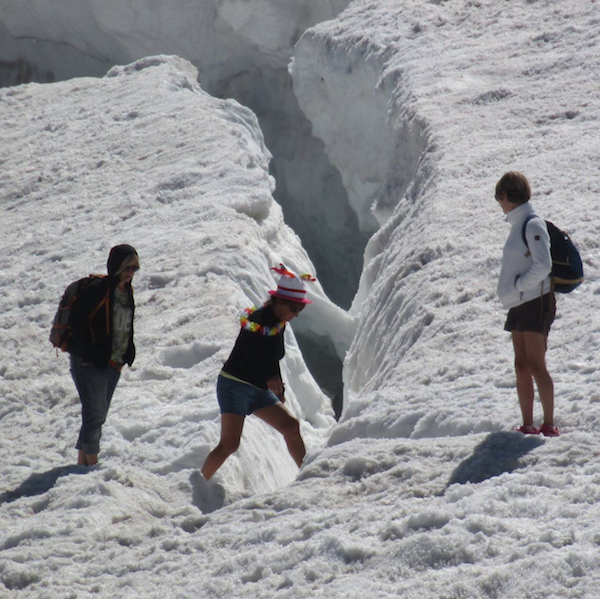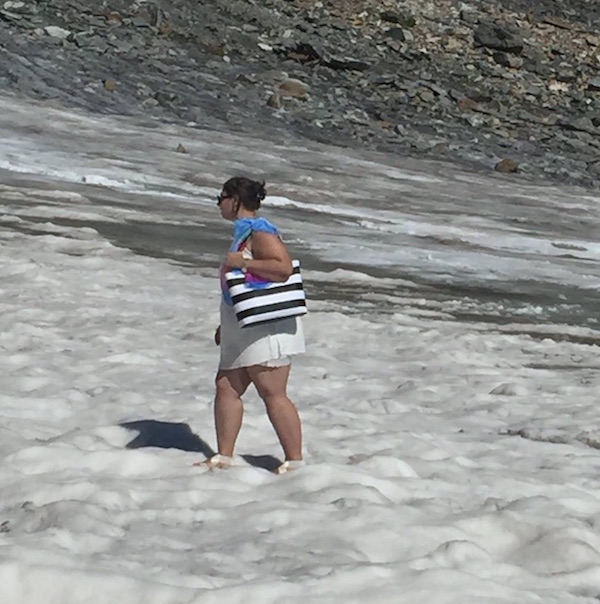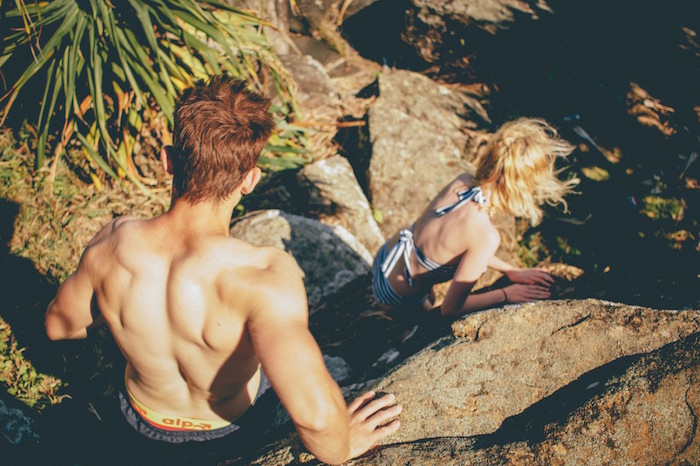Approximate Reading Time: 5 minutes
If you are LOOKING to get into hiking, hill walking, mountain walking or LONG-DISTANCE walking it pays to "Be prepared". How often have you heard this motto? But it is not only for Boy Scouts or Girl Guides.
When I first started exploring the mountains I was 18 and to a degree I was unprepared for the experience. Back in the day I was fit enough, but beyond this there were so many small things to learn - the kind of things that one can only glean by getting stuck in. For example; not having to shoulder a 70 litre pack, with everything you own for every possible eventuality, but rather planning for the terrain you will face and the time you will take. Now, some 20 years later, having quit the rat-race and re-ignited my spirit of adventure, I would do well to revisit the basics of preparedness.
Much of learning in any field is from mistakes. Perhaps though, the cost of these mistakes can be rather higher in the wilderness than is the case with other passtimes. If you collect stamps, you may put a little too much moisture on a stamp hinge which causes the stamp to stick to your album page. At the risk of incurring the wild wrath of ardent philatelists around the world... ain’t no-one gonna get hurt in this scenario!
Hats and shorts... regulating body temperature in Autumn in the French Alps.
Before my first night of wild-camping in the mountains I had read a thousand climbing and outdoor magazines which was in actual fact surprisingly good preparation. Although, if truth be told, it was more down to a lack of opportunity than the desire to research the practical side. I was never a good student. However, living vicariously through the lives of adventurers in the pages of the likes of High Mountain Sports (Climb, as it later became) or Trail Magazine, did actually give me a lot of theoretical 'training' upon which I could legitimately draw when confronted with questions such as how to:
a) equip myself adequately,
b) understand what was beyond my technical capabilities.
How not to tackle an adventure
There have been a few images (see below) which have come to my attention in recent weeks highlighting how the increased accessibility of 'remote' environments has attracted a breed of totally underprepared individual. Of course this is really nothing new. Ever since Thomas Cook started taking tourists on tours of Switzerland in 1863, things have been going gradually… ahem, downhill.
Leslie Stephen (1832 - 1904), one-time President of the Alpine Club, writing in the second half of the nineteenth century compared the Grindelwald glacier to a “wretched whale, stranded on a beach… hacked by remorseless fishermen”. One must feel sympathy for this utter snob as he had to endure “the genuine British cockney in all his terrors” in St Moritz, of all places!
Mark Twain was also not averse to mocking the American’s he encountered on his travels in the Alps, although his brand of self-deprecation makes his thoughts on his fellow countrymen a little more endearing to the modern reader, than Stephen’s. Goodness knows what the locals made of the early American and British tourists pouring into their valleys and trampling ineptly across their pastures in the hope of having their awe inspired.
There is no excuse other than ignorance to go unprepared into the hills or mountains. I would imagine almost every guidebook has a chapter on preparation, seasons and what does or does not constitute sensible clothing.
LET'S PLAY ODD ONE OUT. CAN YOU GUESS WHICH OF THESE IS DRESSED PROPERLY FOR JUMPING OVER CREVASSES?
I have just reached up to my shelves for a copy of Baedeker’s guide to Switzerland, dated 1889, and I see that it contains some gems in the first few pages;
“The first golden rule for the walker is to start early”. It goes on to say “To be provided with enough and no more may be considered the second golden rule for the traveller”, before discussing spare clothing and warning that “the traveller’s ambition often exceeds his powers of endurance […] At the outset, therefore, the walker’s performance should be moderate”.
Wise words indeed. In our current age of information we are all a click away from a million articles about how to enjoy the outdoor life properly prepared (a million and one now). And yet images like those above (from montagna.tv) have been circulating on the internet in recent weeks. I am a huge advocate of making the wilderness accessible to all who show an interest and nothing riles me more than the knee-jerk articles that spring up on a regular basis wanting to ban anyone from going for a walk simply because someone requires deliverance from trouble by the good folk at mountain rescue, but this is taking the p!$$.
The above gallery is intended to amuse, but it is of course a very serious issue. It is our responsibility as good humans to understand that if we seek a little outdoor adventure (and we really, really should) then we should at least understand what we are going to confront. There are many ways to do it and some key areas to read up on. None of the following key points to being prepared require great expense or indeed a lot of time but they can go a long way towards making adventure safer. This may sound boring but keeping warm and knowing how to find your way from point A to point B does not diminish the majesty of the world’s wild places and the more you know, the further from these glacier-wandering-numpties you can venture.
Here are some top tips and top sites to visit to learn the basic skills to head outdoors (not including traversing a GLACIER).
1) Know your fitness levels
Does climbing the stairs leave you breathless? Can you walk to the wine shop? Do you struggle walking home with three bottles of Verve Clicquot?
In the beginning its really important to choose something you know you can do. Choosing a little micro-adventure of a 5-10k walk and a night under the stars close to your home may not sound like the height of adventure, but it is. And every time you do it, you learn something new and whet your appetite for grander escapades.
2) Plan your route
Understand where you are going and the route you will take. Buying a guidebook or a map is essential to any travel along a path or a little more off the beaten track.
- Find some books to inspire you or to guide you.
- Check out some of the best Outdoor / Adventure Travel magazines.
The more you can read ahead of travel the better. You will understand what you are going to confront in terms of terrain the possible...
3) … weather conditions
There is no shame in cancelling an adventure before it has begun. It certainly beats the shame of calling out the emergency services because you are hypothermic on your local common. Until you have gained more experience why not consider being a fair weather adventurer. Having said this there is a lot to be said for enjoying the outdoors in bad weather, it always feels that little bit wilder.
- For your prep' work you can do a lot worse than Mountain Weather Information Service or the Met Office's mountain weather pages.
- Check NOAA's National Weather Service in the USA.
4) Take suitable clothing
Think where you are going. What is the weather normally like, what is the forecast? Then remember that the weather can change quickly in the hills and mountains. Controlling your body temperature is crucial to remaining healthy in the outdoors. Be prepared for this with sun protection and appropriate layers giving basic warmth and to wick moisture away from the body (base layer), thicker layer to trap body heat (mid layer) and waterproofing or wind proofing depending on where you are going (outer layer). Remember cotton soaks up sweat and makes you cold so your favourite t-shirt may not be ideal next to your skin.
Here are two people in the outdoors. They are very confused about layering. Having 'alp" written on your pants does not count as being prepared.
My suggestion would be to try to maintain an even temperature. Of course it is not alway possible given the exertion you may undertake but adjust your pace to take this into account. It is not necessary to go through 150 layer changes every time you feel slightly colder or slightly warmer. It seems obvious to state this but uphill = hot and downhill = cold. You expend less energy in the latter so, as your mum used to tell you, put something warm on when you're sweaty, dear.
What you wear on your feet depends a bit on where you are going. Light, flexible and supportive boots or trail shoes is the basic thing you need.
5) Learn some basic navigation skills
Along with planning your route you should be able to follow it on a map. Men, shelve your pride for the time being. Nobody has a perfect radar or an innate sense of direction strong enough to rely on in wild terrain. You should also have a reasonable idea of how to use a compass. Compasses don’t need batteries.
- Learn the basics of navigation from your armchair and practise in your office.
- Get a little help learning how to use a compass from the nice folks at Ordnance Survey, they ought to know a thing or two about maps.
Now you have done all of that and been out a few times you can start thinking about scaling up your adventures.








